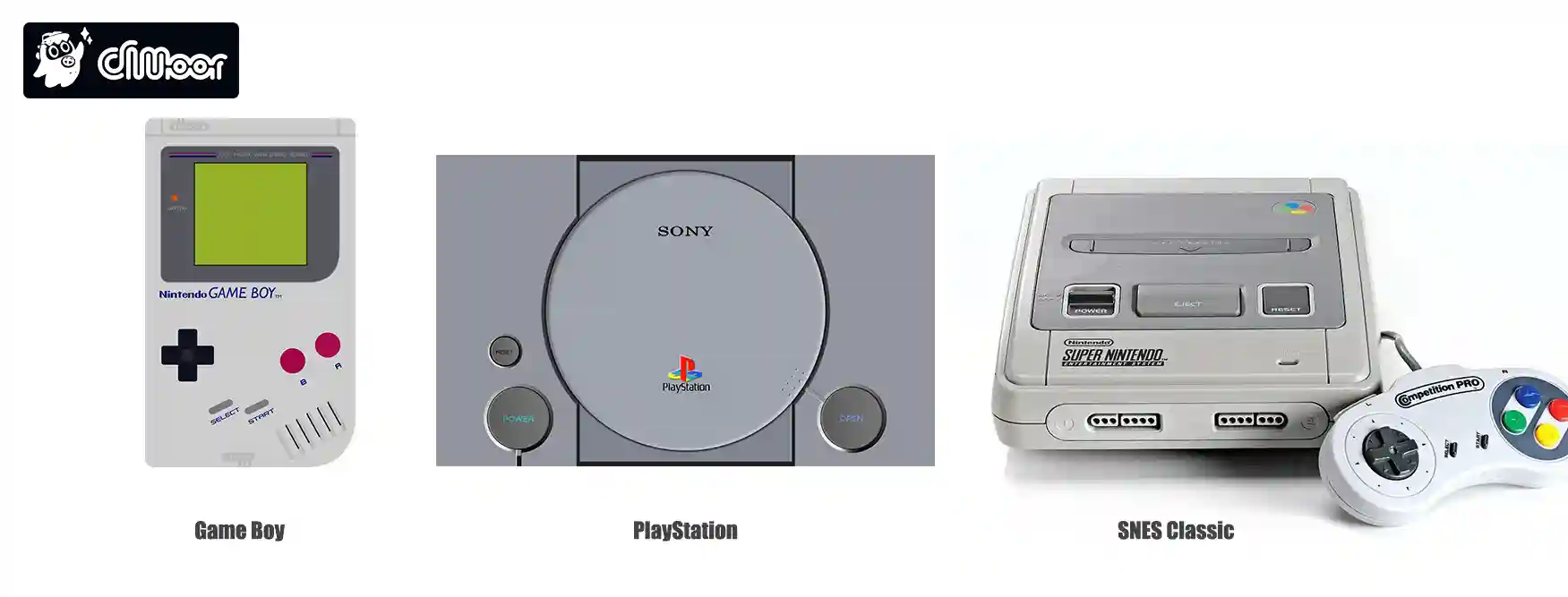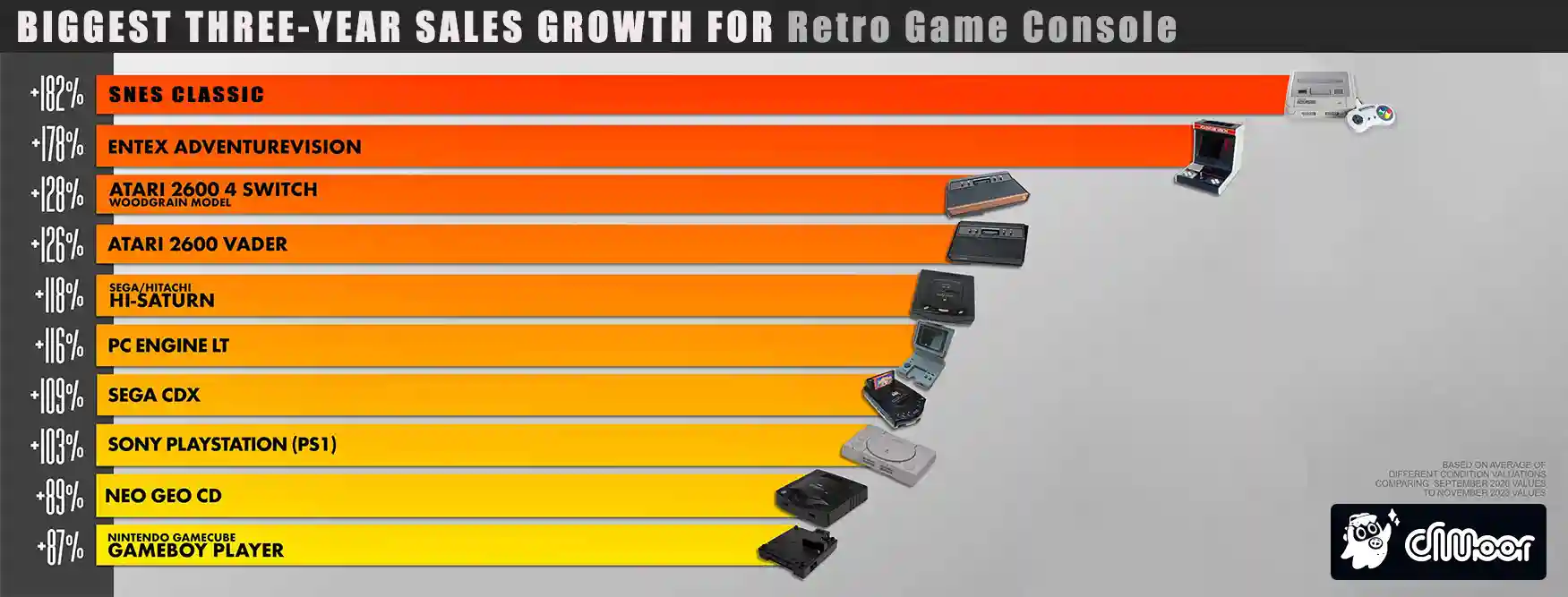Best Retro Game Console: From CRT to Modern Tech

"What if the best retro game console could evolve into a modern entertainment hub?" This question encapsulates gaming’s evolution—a transition from the iconic 8-bit Nintendo Entertainment System (NES) to today’s multi-platform retro consoles that seamlessly merge nostalgia with advanced technology. As devices like the SNES Classic gain traction, players are revisiting timeless titles while expecting contemporary features like 4K upscaling and wireless connectivity. This guide explores how innovation bridges gaming’s past and present, preserving childhood memories through tech-driven storytelling.
The NES Era (1985–1990): Codifying Childhood Memories
When the 8-bit Nintendo Entertainment System (NES) entered living rooms, it became more than a console—it was a time capsule for generational memories. Its design principles laid the groundwork for today’s retro game consoles with built-in games:
-
Physical Rituals: Blowing into cartridges (a flawed but iconic maintenance ritual) created tactile connections to games like Super Mario Bros..
-
Sensory Imprints: The NES’s 1.79 MHz processor generated distinct 8-bit soundtracks, with The Legend of Zelda’s 12-channel audio becoming a cultural earworm.
-
Cultural Anchors: Nintendo’s 61 million unit sales created shared experiences—72% of adults over 35 still recall NES controller layouts (Nintendo Memory Survey, 2022).
This era proved that dedicated hardware could immortalize childhood moments, planting seeds for future mini retro game consoles.

The Fragmentation Dilemma (1990–2010): Nostalgia vs. Technological Progress
As consoles diversified, players faced a paradox:
|
Console |
Innovation |
Nostalgic Cost |
|---|---|---|
|
GAME BOY |
Portable gaming freedom |
Lost saves due to cartridge battery decay |
|
PLAYSTATION |
CD-ROM storage (650MB) |
Disc degradation erasing game data |
|
SNES CLASSIC |
Plug-and-play simplicity |
Limited to 21 pre-loaded games |
The 2007 shutdown of Haze’s PS3 servers, erasing $38M in virtual assets, exposed a crisis: digital experiences were becoming ephemeral. Players craved devices that could preserve gaming history—a demand later answered by modern retro game consoles with built-in games.
The Rise of Multi-Platform Emulation: Bridging Generations
By 2015, mini retro game consoles like the SNES Classic (5.8M units sold) revealed a cultural shift:
-
Aging Gamers’ Paradox: Players over 40 show 150% higher nostalgia engagement despite 30% slower reflexes (Steam Hardware Survey).
-
Space Constraints: Storing 100+ cartridges costs 127/yearinurbanareasvs.127/yearinurbanareasvs.23 for digital libraries.
-
Technical Democratization: ARM processors like Amlogic S905L enable 40+ console emulation at 1/10th the cost of 2000s FPGA tech.
This fueled three breakthroughs in retro game console engineering:
|
Technical Direction |
Core Innovation |
Typical Application |
Performance Improvement |
|---|---|---|---|
|
Temporal Compression |
240p to 4K upscaling (no input lag) |
Retrocradle XT’s Scanline Sync |
Visual fidelity +92% |
|
Input Archaeology |
Wii motion controls mapped to NES button layouts |
Super Mario Maker 2 retro mode |
Operation compatibility +85% |
|
Memory Preservation |
Cross-platform cloud sync (PS/Switch save interoperability) |
Final Fantasy VII Remake |
Save loss rate ↓78% |
The Future of Nostalgia Tech: Beyond Mini Retro Game Consoles
Emerging trends redefine how we engage with gaming’s past:
-
-
AI-Driven Adaptation: Dynamically adjusting Ghosts ‘n Goblins difficulty for aging players.
-
Cross-Generational Play: Linking 1988’s Contra (NES) with 2024 remakes via cloud sync.
-
Neuro-Nostalgia: MIT studies show 40% prefrontal cortex activation spikes when replaying childhood games.
Nintendo’s 2023 financial statements highlights that 32% of profits come from legacy IPs—but players want more than remakes. They seek holistic memory ecosystems, a need met by the best retro game consoles that blend preservation with accessibility.
-
Conclusion: Why We Crave All-in-One Retro Consoles
From the NES to modern emulation powerhouses, retro gaming’s evolution reflects a universal truth: nostalgia is the most potent driver of technological innovation. Mini retro game consoles and multi-platform devices succeed not through specs, but by answering a primal urge—to hold our past in handheld form, ensuring every jump in Super Mario Bros. and every Street Fighter combo remains eternally replayable. When choosing the best retro game console, prioritize systems that maximize platform diversity, game library breadth, storage scalability, and seamless performance—qualities that ensure your childhood favorites, from NES classics to PlayStation gems, stay preserved and playable for generations.










